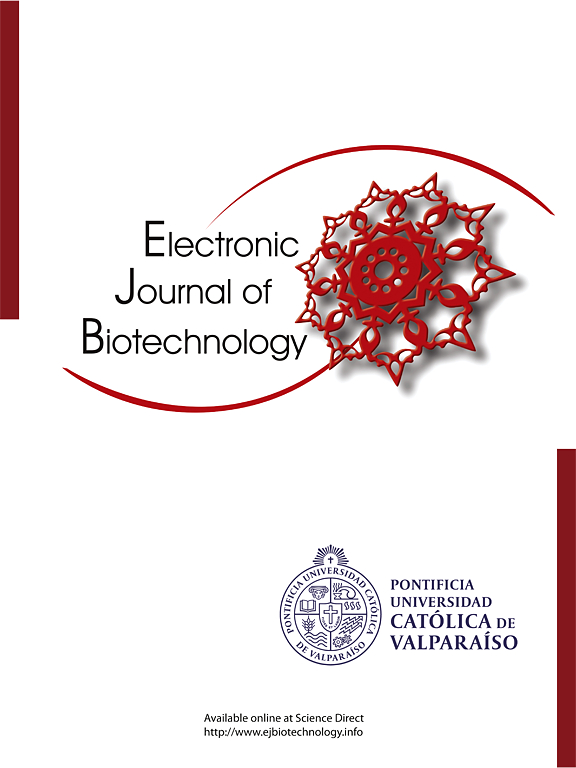Whole-transcriptome analysis reveals the characteristics of intramuscular fat circRNA expression and its associated network in grazing yaks of different months of age under cold stress
IF 2.5
4区 生物学
Q3 BIOTECHNOLOGY & APPLIED MICROBIOLOGY
引用次数: 0
Abstract
Background
The aim of this study was to screen circRNAs related to fat deposition in yaks, and to identify candidate circRNAs for yak meat quality improvement. Six male yaks with insignificant differences in body weights were selected as test subjects, and 3 yaks (G18_IMF) were randomly slaughtered at the beginning of the experiment, while the remaining 3 yaks were naturally grazed until 24 months of age (G24_IMF), and then slaughtered at the end of the experiment, and the intramuscular fat was collected from the dorsal muscle. At the end of the experiment, the yaks were slaughtered and the intramuscular fat from the back was collected for whole transcriptome sequencing.
Results
The results showed that 352 differential circRNAs, 86 differential miRNAs and 3981 differential mRNAs were found. miRNAs and mRNAs network regulation maps were successfully constructed through gene expression correlation analysis and target gene prediction.
Conclusions
Taking the intersection of the predicted circRNA target genes with the differential miRNAs for intramuscular fat in yaks of different months of age, we obtained two candidate ceRNA pairs that might be related to intramuscular fat deposition in yaks, and found that bta-let-7i might be related to fat deposition in yaks and might be regulated by X_85287959_85291068, and that X_85287959_85291068 could be a candidate circRNA to enhance the quality of yak meat. The results may provide a reference for further investigation of the regulatory network of intramuscular fat deposition in yak.
How to cite: Liu Y, Sun Y, Han Y, et al. Whole-transcriptome analysis reveals the characteristics of intramuscular fat circRNA expression and its associated network in grazing yaks of different months of age under cold stress. Electron J Biotechnol 2025;74. https://doi.org/10.1016/j.ejbt.2024.10.004.

全转录组分析揭示了不同月龄放牧牦牛在冷应激条件下肌内脂肪环状rna的表达特征及其相关网络
本研究的目的是筛选与牦牛脂肪沉积相关的环状rna,并鉴定用于改善牦牛肉质的候选环状rna。选取6头体重差异不显著的公牦牛作为试验对象,试验开始时随机屠宰3头(G18_IMF),剩余3头自然放牧至24月龄(G24_IMF),试验结束后屠宰,并采集背肌肌内脂肪。试验结束后屠宰牦牛,采集牦牛背部肌内脂肪,进行全转录组测序。结果共发现352个差异circrna、86个差异mirna和3981个差异mrna。通过基因表达相关性分析和靶基因预测,成功构建miRNAs和mrna网络调控图谱。结论将预测的circRNA靶基因与不同月龄牦牛肌内脂肪差异mirna进行交叉比对,得到了两对可能与牦牛肌内脂肪沉积相关的候选ceRNA,发现bta-let-7i可能与牦牛肌内脂肪沉积有关,且可能受X_85287959_85291068调控,X_85287959_85291068可能是提高牦牛肉质质的候选circRNA。该结果可为进一步研究牦牛肌内脂肪沉积的调控网络提供参考。引用方式:刘毅,孙毅,韩毅,等。全转录组分析揭示了不同月龄放牧牦牛在冷应激条件下肌内脂肪环状rna的表达特征及其相关网络。中国生物医学工程学报(英文版);2009;34。https://doi.org/10.1016/j.ejbt.2024.10.004。
本文章由计算机程序翻译,如有差异,请以英文原文为准。
求助全文
约1分钟内获得全文
求助全文
来源期刊

Electronic Journal of Biotechnology
工程技术-生物工程与应用微生物
CiteScore
5.60
自引率
0.00%
发文量
50
审稿时长
2 months
期刊介绍:
Electronic Journal of Biotechnology is an international scientific electronic journal, which publishes papers from all areas related to Biotechnology. It covers from molecular biology and the chemistry of biological processes to aquatic and earth environmental aspects, computational applications, policy and ethical issues directly related to Biotechnology.
The journal provides an effective way to publish research and review articles and short communications, video material, animation sequences and 3D are also accepted to support and enhance articles. The articles will be examined by a scientific committee and anonymous evaluators and published every two months in HTML and PDF formats (January 15th , March 15th, May 15th, July 15th, September 15th, November 15th).
The following areas are covered in the Journal:
• Animal Biotechnology
• Biofilms
• Bioinformatics
• Biomedicine
• Biopolicies of International Cooperation
• Biosafety
• Biotechnology Industry
• Biotechnology of Human Disorders
• Chemical Engineering
• Environmental Biotechnology
• Food Biotechnology
• Marine Biotechnology
• Microbial Biotechnology
• Molecular Biology and Genetics
•Nanobiotechnology
• Omics
• Plant Biotechnology
• Process Biotechnology
• Process Chemistry and Technology
• Tissue Engineering
 求助内容:
求助内容: 应助结果提醒方式:
应助结果提醒方式:


